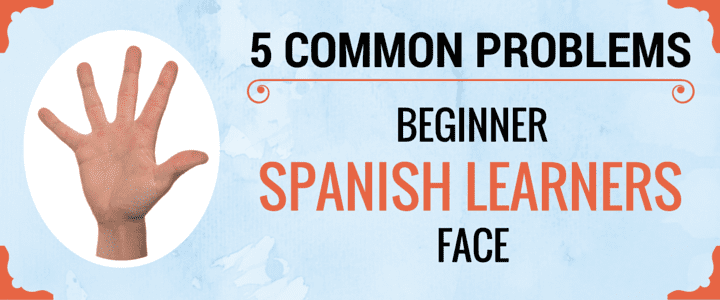Learning a new language can be tough. From new vocabulary to strange grammar rules, there’s a lot of places beginners can stumble or get frustrated.
Although Spanish is a relatively easy language to learn, it’s not without obstacles. Many English speakers, in fact, run into the same hang-ups along the way. For example, conjugation rules take some time to get used to — there’s a reason most Spanish teachers include lots of Spanish conjugation practice in their classes! Repetition helps you understand the rules, and once you’ve got them figured out, the language gets much easier.
In the video below, tutor Sara T. shares five of these common trouble spots, and below the video, we’ve listed some extra resources and links to help you work on them!
1. Conjugating Verbs in Spanish
“For example, with the verb ‘to talk,’ in English, there are five conjugations but the verb is only going to change one time… on the other hand in Spanish, the verb is going to change five times.”
Resources for Spanish conjugation practice:
- Intro to Spanish Verb Conjugation | Tips, Charts, & More
- Spanish Verb Drills, via StudySpanish.com
- Conjugation Practice Quiz, via SpanishDict.com
2. Understanding Lack of Pronouns
“You’ll notice that speakers do not use ‘I,’ ‘you, ‘we,’ or ‘they’ when they speak… because the verb is already communicating the pronoun for you.”
Resources for pronoun practice:
- Pronoun Guide
- Pronouns Quiz, via StudySpanish.com
3. Irregular verbs
“Most of the verbs that are the most common are irregular… they DO NOT follow the same conjugation as regular verbs.”
Remember, the only way to tackle this is to memorize the conjugations!
Resources for practicing irregular verbs:
- The Most Common Irregular Verbs in Spanish, via Linguasorb
- The Simple Guide to Untangling Irregular Spanish Verbs, via Fluent U
4. Phonetics
“There are some different sounds in Spanish that you’re going to have to get used to!… The biggest ones are vowels — for example, in Spanish the ‘A’ has one sound, a soft ‘ah’ sound like in hablar. Whereas the ‘E’ is going to have a strong ‘ay’ sound, like in leer.”
Resources for practicing pronunciation and phonetics:
- Phonetic Transcriptions of Spanish Words, via EasyPronunciation.com
- 3 Embarrassing Mistakes New Spanish Speakers Make [With Audio!]
5. Expressions That Use Different Verbs
“For example, the verb tener, which means ‘to have,’ is used with many expressions that we would use ‘to be’ in English. For example instead of saying ‘I am cold,’ in Spanish you’re going to say ‘I have cold.’ (Tengo frio.)
Resources for learning Spanish expressions:
- 12 Common Spanish Expressions with Tener, via SpeakingLatino.com
- Idiomatic Expressions with “Tener”, via StudySpanish.com
Readers, what other resources do you use for Spanish conjugation practice, verb practice, or pronunciation practice? Let us know by leaving a comment below!
 Post Author: Sara T.
Post Author: Sara T.Sara T. teaches Spanish, English, Anatomy, and more through online lessons. She has over five years of teaching experience and holds a Masters degree in Teaching and Learning with Technology, with a specialization as an online educator. Learn more about Sara here!
Suzy S.
![5 Common Problems Beginner Spanish Learners Face [Video]](/_next/image?url=https%3A%2F%2Ftakelessons.com%2Fblog%2Fwp-content%2Fuploads%2F2016%2F03%2FMO-5-Common-Problems-Beginner-Spanish-Learners-Face-1.png&w=3840&q=75)

